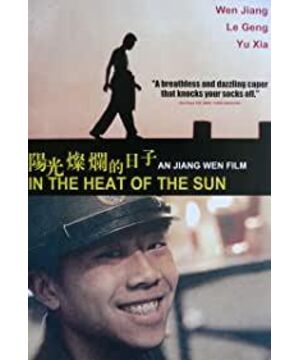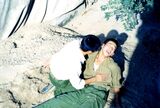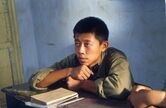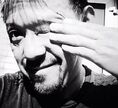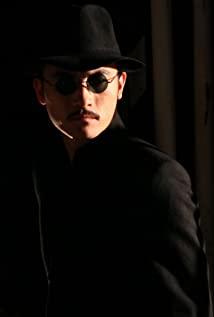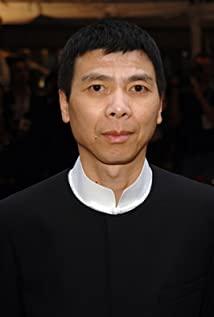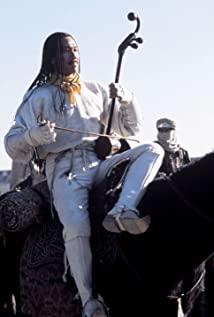In "Sunny Days", the clip of Ma Xiaojun diving in the swimming pool near the end is one of the indelible highlights of the whole film. In this clip, the camera comprehensively uses various picture modeling elements such as scene, angle, light, color, etc., which reflects the profound knowledge and the director's unique use of audio-visual language. The following mainly analyzes this fragment through the scene and angle. This clip begins with a series of shots of Ma Xiaojun climbing to the top of the diving platform. In my understanding, the escalator here is actually a metaphor for Ma Xiaojun's life course. He keeps climbing up and exploring his own life path. It opens with a close-up of the foot as the opening shot. This is because close-ups separate the spatial relationship between the subject and the environment, so they are often used as transition shots. This close-up highlights and emphasizes Ma Xiaojun's foot movements, forming a strong and clear visual image. In the picture, Ma Xiaojun is constantly advancing towards the highest diving platform and climbing up, showing the trend of Ma Xiaojun's constant desire to break through the frame and expand outwards, creating visual tension. Immediately followed by a medium shot, Ma Xiaojun was still climbing up. Different from the previous close-up of the feet, this medium shot makes the audience's attention focus on the behavior, movements and facial expressions of Ma Xiaojun's upper body: while seeing Ma Xiaojun's upward movement, the audience also sees Ma Xiaojun's face. of anxiety. As a result, Ma Xiaojun's mental state of unease at this time also showed. Then there is a long-range subjective push shot. In the eyes of Ma Xiaojun, friends in the distance are playing, but he is alone and overwhelmed. Compared with the objective point of view, the subjective point of view focuses on the visual psychology of the main character, which will make the audience feel immersed in the scene, and often produce unusual visual impressions. Then, in the clip, Ma Xiaojun's upward movement is shown from different angles. The first is an overhead panorama. In this overhead shot, Ma Xiaojun, as the subject, looks very shriveled and small, as if he was suppressed. This angle has a strong emotional color, showing the gloomy and sad mood and atmosphere in the clip. In stark contrast to this is the next upside-down perspective shot. The upward shot highlights Ma Xiaojun’s position as the subject of the picture. As the subject, he is taller and taller than usual, showing that although he feels helpless at this time, he has not stopped to climb up to the goal and bravely explores the unknown. The road of life, even if there is fear, but never thought of the noble quality of giving up halfway. In the final stage of this paragraph, a close-up shot of Ma Xiaojun from a frontal, head-up angle is used first. Close-up is one of the main scenes to express the facial expression of a character and describe the character of a character. The space range is small and the depth of field is short, which can produce a closer vision and has a certain directionality. While shooting from a frontal angle, you can see the complete facial features and expressions of the characters. Shooting from a head-up angle, the picture will feel more objective and fair. In the camera, the audience can clearly see Ma Xiaojun's hesitant expression. He is thinking about whether he should go to the high platform, whether he should bravely examine his life, and whether he should walk towards himself soberly. as the end The shot was taken from upside down. Despite hesitation and hesitation, Ma Xiaojun finally chose to climb the high platform. The upside-down camera once again magnified Ma Xiaojun's main body position, highlighting and beautifying Ma Xiaojun's image, because he is brave. After Ma Xiaojun climbed to the high platform, the director used a series of multi-angle shots to render Ma Xiaojun's insignificance, loneliness, hesitation and hesitation. Next is an overhead shot from a subjective perspective. Through strong contrast, it shows the estranged relationship between Ma Xiaojun and these former friends, and also highlights Ma Xiaojun's loneliness after being isolated by his friends. The way they laugh and play is also in contrast to Ma Xiaojun's psychological mood at this time. Ma Xiaojun finally summoned up the courage to jump down. His diving posture was as graceful as that of a diver, but he fell into the water with such an amateur struggle. And this is also a metaphor. Everyone has their youth, it's like taking off in diving. Because of youth, we are fearless; because of youth, we act arbitrarily; because of youth, we are impulsive; because of youth, we are confused and helpless; it is precisely because of youth that we make mistakes one after another, time and time again for the sake of youth Paid tuition. The director chose to shoot from the back of the platform to show the process of Ma Xiaojun's fall. Because of mistakes, young people fall, but it is also here that young people begin to be reborn. At this time, Ma Xiaojun was like a key, the key to his own future. After entering the water, the director used a multi-angle upside-down shot to highlight Ma Xiaojun's constant struggle to swim to the surface underwater. After swimming out of the water, in Ma Xiaojun's subjective medium shot, we see his friends watching him from the shore. The audience can clearly see that their expressions are disdainful and contemptuous, which to a certain extent reflects the estranged and antagonistic relationship between them. In the next panoramic shot, Ma Xiaojun stretched out his hand and kept swimming towards his friends. He was eager for his friends to accept him again, but the next shot in a subjective view highlighted the friendship of his friends. The dominant position, highlighting their tallness, shrouded Ma Xiaojun and became his lingering shadow. In the close-up of the hands that follow, the frivolous gestures of the friends are in stark contrast to Ma Xiaojun's effort to hold their hands, reflecting the difference in how the two treat each other. Ma Xiaojun thought he had finally come to his friend's side, but stuck his head out but was kicked back into the water by his friend's feet. The close-up shot of him taking Ma Xiaojun as the main subject and Ma Xiaojun taking his friends as the main subject kept being kicked back The subjective shot of Ma Xiaojun in the water is constantly interspersed with the subjective shot of Ma Xiaojun who is constantly struggling in the water, rolling, and being kicked back. The strong visual effect shows that Ma Xiaojun can no longer restore the relationship with his friends. , which highlights Ma Xiaojun's loneliness and helplessness. In the last long-range shot, Ma Xiaojun lay flat on the water as if he was dead. This is a symbolic death. water is The origin of human beings here symbolizes the beginning of life. The actions of Ma Xiaojun's friends made Ma Xiaojun realize that he could never go back to the past, and all his desires were shattered. The former self died, and in this pure blue water, he will be reborn, he will bid farewell to the former self, and take the reborn self from the origin to the future. His youth ended desperately and forever. The uniqueness of the film is not only in the short three minutes, but in the short three minutes, there is much more to learn. An excellent director working with an excellent photographer will definitely bring indescribable happiness to the audience.
View more about In the Heat of the Sun reviews


